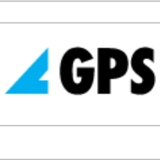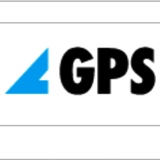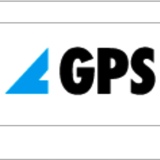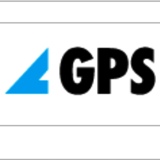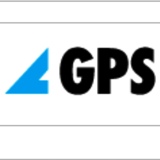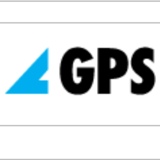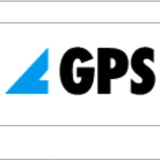Information
-
Reference:
-
Zone:
-
Location:
-
Conducted on
-
The audit is split into 6 sections and each section has questions relating to observed practice related to energy conservation
These questions are based on improvements which we have agreed to implement or on good practice/behavioural issues.
Each time the answer is red, it will score a point, so the more points in the whole audit, the more issues there are to resolve (N/A scores no points)
Where possible add photographs to observations and where necessary add actions to be carried out
General Information
-
Description of site operations:
-
Site Pictures:
-
Personnel involved:
-
Auditor(s)
-
Comments:
-
Executive Summary of findings:
Lighting
-
Are there any lights left on where there is no-one in the area?
-
Worth checking areas like store cupboards and plant rooms and external storage sheds where there are PIR sensors
-
Are external lights only on during hours of darkness? (eg perimeter lights, car parks, external storage sheds etc)
-
Are levels of lighting suitable for the area?
-
Too much light wastes energy, and too little can be dangerous so both situations should be answered "No"
-
Is lighting low energy? (Low energy tubes a NF starters for florescent lighting, LED, low energy bulbs etc)
-
Replacement of tungsten filament bulbs with compact florescent tubes, use of high frequency florescent tubes, mirror reflectors in use, discharge lighting for high ceilings.
-
Are light coverings clean and not discoloured?
-
Are artificial lights on when there natural light that could be used instead? (For example, skylights, windows etc)
-
Are there lights that are not functional?
-
Lights are usually there for a good reason and if not functional (and not required) they should be removed or safely decommissioned. Lights are not functional could, additionally, present a fire risk.
If the faulty unit is a fluorescent unit, even with a failed tube, the unit is using electricity which depending upon the type could be in the range between 5 and 25% -
Are lighting levels sufficient even with non-functional lighting?
-
This can happen as lighting becomes more efficient and machinery or processes move around the building.
Action: reassess lighting requirements in this area and potentially reduce the number of active bulbs -
Are light switches obvious? And are there sufficient light switches?
-
Switches should be labelled to allow only the relevant lights to be switched on or switched off to help people to know where to turn the lights (or banks of lights) off when necessary?
-
Are there movement sensors on lighting to ensure it is off when there is no activity?
-
Actions from the LIGHTING Section
Action
-
Action required
-
Action by:
Heating/Cooling
General heating and cooling
-
Is the office area heated to more than 19 degrees Centigrade?
-
Are high activity areas heated to a too high a temperature? (See guidance below)
-
Consider reducing thermostatic settings in areas which do not require a full comfort eating.
Typical settings should be:
Offices 19 degrees Centigrade*
Workshops 16 degrees Centigrade
Stores etc 10 to 12 degrees Centigrade
*The maximum level recommended for heating offices is 19 degrees Centigrade and costs rise by about 8% for each 1 degree Centigrade of overheating -
Are windows and doors used to reduce the temperature when the heating is on?
-
Money is wasted when windows and doors are opened when the heating is on.
Turning down heating can increase comfort and save money rather then opening doors or windows (this is especially true for roller shutter doors for example where significant heat loss can occur if they are left open) -
Are thermostats and thermostatic radiator valves set to the correct temperature and then left alone?
-
Thermostatic controls often abused by being used as on/off switches. This can result in discomfort for staff and money being wasted.
-
Are thermostats/temperature sensors located in the right places and are settings of Frost thermostats regularly checked
-
This is extremely important, especially after refurbishment and machine movements etc.
Siting a thermostat in the cold and draughty place will result in overheating. Conversely, siting a thermostat near a source of heat (such as direct sunlight) may lead to under heating.
Typical settings for frost thermostat should be
- internal 4 degrees Centigrade
- external 0 to 1 degree Centigrade -
Are heating times programmed to match occupancy times for example in offices? (Including holidays)
-
Are heating surfaces such as radiators clear of things like furniture? (note the potential fire hazard when obstructing other types of heaters!)<br><br>
-
Is heating equipment regularly serviced to ensure its correct and efficient operation?
-
Is heating and air conditioning in the same room operating simultaneously?
-
Are there sources of unwanted heat in air-conditioned rooms?
-
For example heat from uninsulated pipework and similar sources makes air-conditioning equipment work harder and waste money.
-
Are employees using portable Electric heaters?
-
Portable Electric heaters are expensive to run and, as portable heaters are usually not fitted with time switches or thermostats, they will often be left running all day.
It is important to find out why the heating is required.
There are so many reasons why local heaters are put in place, and quite often it is due to local thermal air movement which can often be avoided by a simple screen to isolate the area from a movement.
More long-term, and often more expensive solutions are to find the source of air movements (external doors causing air movement corridors for example).
Drafts are often perceived as being cold but the reality is that the draft is causing a chilling effect similar to free air cooling or adiabatic plant for chilled water systems -
Is heating and cooling pipework appropriately insulated?
-
Are extraction fans for areas such as toilets and kitchens time controlled? And are these fans fitted with self closing shutters?
-
Running extraction fans during periods when rooms are not occupied is generally not necessary and wastes money.
Warm air is extracted from the building resulting in the heating system having to work harder.
Lack of shutters means cold air can enter the building when the fan is not operating -
Do heaters automatically switch off when doors in loading areas are opened?
-
Are heaters left on when no-one is in the area?
-
Is air conditioning left on when no-one is in the area?
Process heating or cooling
-
Are all moulding and/or extrusion machine barrels appropriately insulated to prevent loss of heat?
-
Are heaters for moulding or extrusion machines turned off when the machine is not in use?
-
Are dryers for material only operational when required? And is the temperature set to 60 degrees Centigrade maximum?
-
Are there significant cooling water leaks, resulting in the cooling system having to work harder?
-
Is cooling system set to a level to ensure correct levels of cooling for the process, but not so low as to require excessive energy consumption?
-
Is waste heat recovered (for example from compressor rooms)?
-
Is there any other form of process heating equipment?<br>Is it appropriately sealed and insulated to prevent losses etc<br>Is such equipment regularly serviced to ensure it is efficient<br>
-
Actions from the HEATING/COOLING Section
ActionAction
-
Action Required:
-
Action By:
Water
-
Are there any signs of leaking water taps or taps which are not turned off properly?
-
Is there any sign of leakage from water pipework systems?
-
Puddles which refuse to dry up are indicative of underground pipe leakage, and drips from pipework at high level, or from building structure also indicate problems with leaks.
-
Is the temperature of the hot water set to just over 60 degrees Centigrade? (AND NO HIGHER) - too low or too high should be "No"
-
Many companies overheat the hot water - every 10 degrees Centigrade reduction in hot water temperature saves 15% of energy.
However - It's important not to reduce the temperature of stored hot water below 60 degrees Centigrade due to the risk of legionella. -
Are hot water systems turned off during holiday periods and shut downs?
-
Is hot water being used when cold water would be equally effective? (For example washing floors and rinsing)
-
Are hot water pipes and cylinders appropriately insulated?
-
Are flush controllers installed on urinal systems in the gents toilets?
-
Uncontrolled urinals normally flush every 20 minutes often wasting money.
Controllers limit flushing to periods when the building is occupied -
Do WC cisterns hold only 7 litres of water or have a dual flush device?
-
Are there any mains water cooling systems in operation?
-
It is very inefficient use mains water once for cooling purposes and it wastes money. Consider using closed loop cooling systems.
-
Are there any signs of leaks for the hot water heating system?
-
Is the boiler house adequately ventilated?
-
Adequate ventilation equates to all louvres and vents open and not obstructed
Restricting the supply of air can result in loss of efficiency due to inadequate combustion and potentially release of dangerous gases -
Are hot water heating systems serviced regularly?
-
Are boilers and related valves, flanges and pipework insulated to prevent heat loss?
-
Actions from the WATER Section
Action
-
Action:
-
Action By:
Building
-
Do staff keep windows and doors closed when heating is used
-
Are doors and windows sealed to prevent draughts?
-
Unused doors and windows can be sealed. Windows and doors which are used should have proper seals and correct closure to prevent the "chill factor" from draughts prompting staff to raise the temperature to compensate.
-
Is there any sign of damp?
-
Damp causes damage to the building infrastructure and severely reduces the insulating properties of building materials.
Check for faulty damp proof courses, blocked or leaking gutters, broken or faulty down pipes, broken roof tiles etc. -
Are all external doors fitted with door closers
-
All roller shutter doors prevented from closing by using waste bins, traffic cones (positioned to cover sensors).
-
Are roller shutter doors set to a short close duration?
-
Are windows double glazed or fitted with secondary glazing?
-
Also consider rooflights and glass roof areas where heat losses could be considerable
-
Is there solar film (or treatment) on windows subject to direct sunlight and where there is air conditioning
-
Heat is gained through windows not fitted with solar treatments, and the additional heat means that the air conditioning needs to work harder and costs more to operate.
Care should be taken that this does not result in increased use of artificial lighting if so -
Are external walls insulated?
-
Actions from the BUILDING Section
Action
-
Action:
-
Action By:
Electrical
-
Is the electricity consumption baseload (total minus the production load) known? Is it known where this consumption comes from?
-
Is electricity consumption monitored regularly?
Domestic/Non-productive consumption:
-
Are all computers, printers, and associated equipment switched off when not in use? (Especially monitors left in standby)
-
Are photocopiers switched to stand-by mode when not in use for long periods?
-
Are all seals on refrigerators, freezers etc in good condition?
-
Are staff in the habit of boiling more water than needed?
-
Are water boilers left on continuously in kitchen areas?
-
Are domestic appliances energy star compliant?
Process related consumption:
-
Are production related motors fitted with variable speed drives (inverters)?
-
This should include motors used for hydraulic systems, cooling systems, compressed air, extruders, pumps etc
By reducing the electrical supply frequency to motors, there will be a reduction in speed which can be linked to feedback systems so full motor speed is available when needed but is slower when not required. -
Where VSD drives are fitted, are these in operation? and are they showing savings? What frequency are they running at
-
Running a VSD drive at 40 Hz for example saves half the energy
-
Are motors on machines with NO VSD running at less than 50% of their nameplate rating?
-
Oversized motors tend to run at reduced efficiency when running at lower loads (requires measurement of peak running currents on motors over 5kW)
-
Is production equipment which is not in use turned off?
-
This should include, but is not limited to: conveyers, hydraulic pumps (check VSD is functional), lathes, LEV, soldering Irons, extraction fans, chillers, water pumps, compressed air etc)
Care should be taken with respect to electronic systems such as programmable controllers where turning them off may lose the memory. -
Is ancillary equipment interlocked to the main machine to ensure it is turned off when the main machine is off?
-
Are fork lift truck batteries left on charge for extended periods?
-
Actions from the ELECTRICAL Section
Action
-
Action:
-
Action By:
Compressed air
-
Are items using compressed air isolated when not in use?
-
Are there signs of compressed air leaks?
-
Automatic water drain taps, valves (or manual drain valves), connections, pipework, cylinders on equipment etc can all be a source of leakage.
If these leaks are audible during normal production then they are serious and should be labelled for immediate rectification. -
Is unused compressed air pipework isolated?
-
Unless correctly isolated, redundant runs of pipework have to be pressurised each time the line is pressurised, wasting energy
-
Is compressed air generated at the minimum required pressure?
-
Typical pressures are 7 bar or higher. If pressure is reduced by 1 bar, then costs can be reduced by 4%
-
Are compressed air guns operating at low pressures?
-
Operating blow guns to 2bar (30psi) from the 7bar normal pressure, will reduce operational costs by 60%
The HSE recommend that blow guns should not be operated above 2 bar -
Are air compressors running continuously?
-
When there is no demand for air then compressors should shut down, they should be turned off during shutdowns etc.
-
Is the air intake for compressors taken directly from outside?
-
Compressors operate more efficiently using cool air, this could reduce operational costs by up to 3%
-
Is the air treatment system regularly inspected and maintained?
-
Are compressor air inlet filters and pre/post filters regularly cleaned and replaced?
Are condensate traps operating correctly?
are air dryers and controls working correctly?
are heat exchangers clean? -
Are compressed air tools used?
-
Compressed air tools are significantly more expensive to run than the equivalent electrical tool
-
Is the air receiver large enough?
-
Undersize air receivers result in frequent compressor loading and unloading
-
Is the heat generated by the compressor recovered or used?
-
90% of the energy used by a compressor is turned into heat
-
Actions from the COMPRESSED AIR Section
Action
-
Action:
-
Action By:
General Observations
-
Additional comments and/or observations
Additional comment
-
Issue
-
Add media






